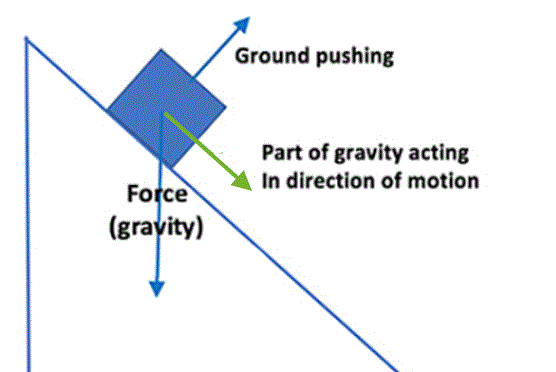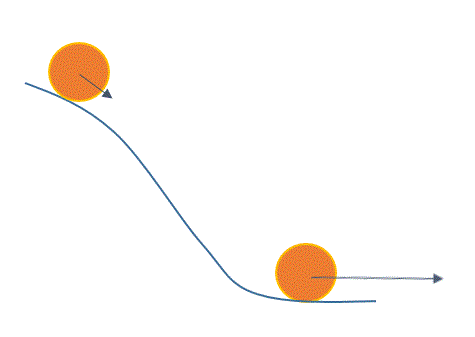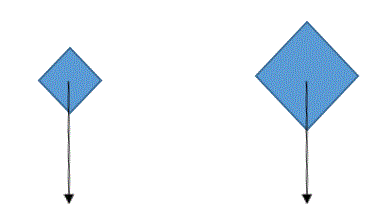Vector quantities are variables that have both a magnitude (or amount) and a
direction. Vectors are represented by arrows. The length of the arrow represents the magnitude, and
the direction the arrow points is the direction.
Some examples of vector quantities are:
-
Force: It has a magnitude (amount of force) and direction the force acts on an object. In the
picture below, the arrows show the direction that each force acts on the object. The length of the arrows
represents the magnitude of each force. Because the force of gravity acting on the body is greater than
the other forces, the arrow representing the force of gravity (or the weight of the object) is longest.

-
Instantaneous Velocity: This is both the speed of an object and the direction it is
moving at a point in time. The picture below shows the instantaneous velocity of a ball at two points as
it rolls down a hill. When it is at the top of the hill, it is moving slower than when it's at the bottom
of the hill. This is why the arrow is longer when the ball is at the bottom of the hill. The direction of
the arrow is the direction the ball is moving at that point in time.

-
Acceleration: This is how quickly an object
changes in speed and the direction of its change in
speed. For example, in the picture below, two
objects are falling downward due to gravity (there
are no other forces acting on the objects). The
direction of the arrows indicate that the objects
are accelerating downward. The arrows are the same
lengths because the objects accelerate by the same
amount. (All objects fall with the same acceleration
if only gravity acts on the objects!)

Scalar quantities are variables that only have a magnitude (or amount); they do not have a direction.
Here are some examples:
-
Volume is just the amount of space an object occupies. (It does not have a direction; how can it?)
-
Mass is the amount of stuff (atoms and molecules) that makes up an object. (It does not have
a direction.)
-
Distance is the length of something or how far something moves. (It doesn't matter the direction(s)
that the object traveled.)
-
Average Speed is just how far an object moves divided by the time it took the object to move that
distance. The object might have changed direction many times while it was moving.


